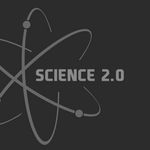Optics

Uniform and mottle patterns are what most people recognize as camouflage and those patterns function by resembling the background. True background matching is not simple, though, and Roger T. Hanlon and colleagues say they are making one of the first efforts to quantify camouflage body patterns.
Although they have begun to compare camouflage tactics in many animals — large primates, amphibians, reptiles, fishes, insects — they are currently focusing on the cephalopods, which include squid, octopus, and cuttlefish. Remarkably, these soft-bellied mollusks are able to dynamically…

Picture: Sundog on the right, the Sun on the left.
Picture was taken in Finland, Lahti 3.1.2008. Sundogs exist, when there is ice in atmosphere which reflects the Sun light. The phenomenon is not that rare, but usually you do not have camera with you. This one was taken with mobile phone.

In 1609, 400 years ago, Galileo revolutionized humankind's understanding of our position in the Universe when he used a telescope for the first time to study the heavens and sketched radical new views of the moon and also discovering the satellites orbiting Jupiter.
To celebrate the International Year of Astronomy (IYA), which marks the anniversary of Galileo's discoveries, a group of astronomers and curators from the Arcetri Observatory and the Institute and Museum of the History of Science, both in Florence, Italy, are recreating the kind of telescope and conditions that led to Galileo's…

Using a beam of light shunted through a tiny silicon channel, researchers have created a nanoscale trap that can stop free floating DNA molecules and nanoparticles in their tracks. By holding the nanoscale material steady while the fluid around it flows freely, the trap may allow researchers to boost the accuracy of biological sensors and create a range of new 'lab on a chip' diagnostic tools.
Light has been used to manipulate cells and even nanoscale objects before, but the new technique allows researchers to manipulate the particles more precisely and over longer distances.
"At the…

Deriving plentiful electricity from sunlight at a modest cost is a challenge with immense implications for energy, technology, and climate policy. A paper in a special energy issue of Optics Express, describes a relatively new approach to solar cells: lacing them with nanoscopic metal particles. As the authors describe in the article, this approach has the potential to greatly improve the ability of solar cells to harvest light efficiently.
Like plants, solar cells turn light into energy. Plants do this inside vegetable matter, while solar cells do it in a semiconductor crystal doped…

A team of astronomers from Europe and the US studied the "Einstein Cross", a famous cosmic mirage. This cross-shaped configuration consists of four images of a single very distant source. The multiple images are a result of gravitational lensing by a foreground galaxy, an effect that was predicted by Albert Einstein as a consequence of his theory of general relativity. The light source in the Einstein Cross is a quasar approximately ten billion light-years away, whereas the foreground lensing galaxy is ten times closer. The light from the quasar is bent in its path and magnified by the…

It may seem, at least to those of us who have been alive long enough to witness any of the advances in semiconductor technology, that computer power has been improving at breakneck speed. A quantum computer, however - a theoretical type of computer that utilizes the states of atoms to store information instead of magnetic fields - may make our current conception of computing power completely obsolete. And now, new research into the storage and retrieval of quantum information has brought quantum computing one step closer to reality.
In order to be useful, quantum computers will eventually…
Researchers at Purdue University have developed a technique that uses a laser and holograms to precisely position numerous tiny particles within seconds, representing a potential new tool to analyze biological samples or create devices using nanoassembly.
The technique, called rapid electrokinetic patterning, is a potential alternative to existing technologies because the patterns can be more quickly and easily changed, said mechanical engineering doctoral student Stuart J. Williams.
These images were taken from a video illustrating a new technique that uses a laser and holograms to precisely…

It's an idea that has pervaded a huge amount of science fiction and fantasy stories, from Star Trek to Harry Potter, and there are few of us that would deny a couple of hours with one - but is an invisibility cloak actually possible? Although the lightweight, flowing cloak of Harry Potter may be impossible in the near future, scientists are quickly creating and studying new metamaterials - materials with a negative index of refraction - that are paving the way to making invisibility a reality.
A material's refractive index is a measure of how much the speed of light changes when it enters…

Research into the development of invisibility devices has spurred two physicists’ thought on the behaviour of light to overcome the seemingly intractable problem of optical singularities which could soon lead to the manufacturing of a perfect cat’s eye.
A research paper published in a New Journal of Physics’ focus issue ‘Cloaking and Transformation Optics’ called ‘The Transmutation of Singularities in Optical Instruments’, written by Thomas Tyc, Masaryk University, and Ulf Leonhardt, the University of St. Andrews and Singapore National University, shows that it is possible to reflect light…